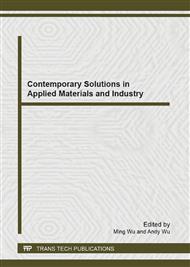p.611
p.614
p.617
p.620
p.624
p.633
p.639
p.644
p.649
Analyses of University Staff Members’ Health Fitness - A Case Study on Asia University
Abstract:
Objective: to understand the effectiveness of the health and fitness evaluation among the staff members in Asia University. Method: Evaluating and analyzing 95 staff members by using descriptive statistic (17 male, 58 female). The average age of male was 37.73, and 31.59 years old for the female. The evaluation included physical health norm and physical fitness level. The result showed that the average male BMI was over the standard, with blood pressure a little higher than normal. The female BMI and blood pressure were showed as normal. The waistline of both male and female were normal. In the physical fitness area, the male aerobic fitness level was normal, muscular strength was very good and flexibility was normal. The aerobic fitness level of female was normal, muscular strength was good and flexibility was poor. In conclusion, both male and female staff members were doing well in terms of their physical fitness. The male staff members especially need to control their weight in the BMI area. The female staff members should use stretching exercises to improve their flexibility. By doing the health and fitness evaluation helped us to understand the participation in physical activities of the staff members. Their physical fitness level indicated as a reference for their personal physical and health status. Practicing health and physical evaluation has a positive meaning and qualitative reasons. In promoting physical fitness activities and gets the staff members to involve in physical activities in daily basis also develop it as a lifetime habit. Not only to improve the staff members’ health and fitness level effectively, but also the quality of their life.
Info:
Periodical:
Pages:
639-643
Citation:
Online since:
April 2013
Authors:
Keywords:
Price:
Сopyright:
© 2013 Trans Tech Publications Ltd. All Rights Reserved
Share:
Citation:


